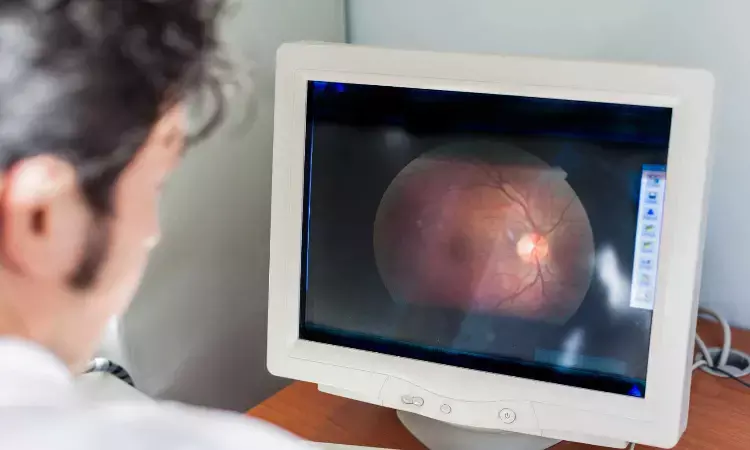- Home
- Medical news & Guidelines
- Anesthesiology
- Cardiology and CTVS
- Critical Care
- Dentistry
- Dermatology
- Diabetes and Endocrinology
- ENT
- Gastroenterology
- Medicine
- Nephrology
- Neurology
- Obstretics-Gynaecology
- Oncology
- Ophthalmology
- Orthopaedics
- Pediatrics-Neonatology
- Psychiatry
- Pulmonology
- Radiology
- Surgery
- Urology
- Laboratory Medicine
- Diet
- Nursing
- Paramedical
- Physiotherapy
- Health news
- Fact Check
- Bone Health Fact Check
- Brain Health Fact Check
- Cancer Related Fact Check
- Child Care Fact Check
- Dental and oral health fact check
- Diabetes and metabolic health fact check
- Diet and Nutrition Fact Check
- Eye and ENT Care Fact Check
- Fitness fact check
- Gut health fact check
- Heart health fact check
- Kidney health fact check
- Medical education fact check
- Men's health fact check
- Respiratory fact check
- Skin and hair care fact check
- Vaccine and Immunization fact check
- Women's health fact check
- AYUSH
- State News
- Andaman and Nicobar Islands
- Andhra Pradesh
- Arunachal Pradesh
- Assam
- Bihar
- Chandigarh
- Chattisgarh
- Dadra and Nagar Haveli
- Daman and Diu
- Delhi
- Goa
- Gujarat
- Haryana
- Himachal Pradesh
- Jammu & Kashmir
- Jharkhand
- Karnataka
- Kerala
- Ladakh
- Lakshadweep
- Madhya Pradesh
- Maharashtra
- Manipur
- Meghalaya
- Mizoram
- Nagaland
- Odisha
- Puducherry
- Punjab
- Rajasthan
- Sikkim
- Tamil Nadu
- Telangana
- Tripura
- Uttar Pradesh
- Uttrakhand
- West Bengal
- Medical Education
- Industry
New tools may treat retinal degenerations at advanced stages of disease: Study

Inherited retinal degenerations (IRDs) are a group of genetic disorders that lead to progressive vision loss as the light-sensing cells of the eye-the photoreceptors-die due to mutations in genes needed for their function and survival.
Gene therapy has emerged as a promising approach, replacing or supplementing defective genes to preserve or restore vision. Yet, most existing gene therapy strategies have been developed and tested in early disease stages-leaving a major gap in treating patients diagnosed after significant retinal damage has already occurred.
Now, in a study published in Molecular Therapy, researchers from the Division of Experimental Retinal Therapies at the University of Pennsylvania’s School of Veterinary Medicine (Penn Vet) and their collaborators have developed a powerful new toolkit to help close that gap.
Led by Penn Vet’s Raghavi Sudharsan, an assistant professor of experimental ophthalmology, and William A. Beltran, the Corinne R. Henry Bower Endowed Professor of Ophthalmology, the team developed four novel photoreceptor-specific promoters. These “short segments of DNA act as molecular ‘switches’ to turn on the therapeutic gene in target cells, driving strong and specific gene expression in rod and cone photoreceptors even in mid-to-late stages of disease,” explains Sudharsan, the lead author on the paper.
“Most currently-used promoters have been tested only in healthy animal models, and their performance often declines when the retina degenerates,” continues Sudharsan. “In contrast,” she says, “the newly developed promoters were selected based on their ability to turn on gene activity in retinas that had already lost more than half of their photoreceptors-making them more relevant for the stages of disease at which patients are frequently diagnosed.” In head-to-head comparisons, the new promoters outperformed the widely used GRK1 promoter in both expression strength and specificity.
“This study addresses one of the biggest hurdles in IRD treatment: how to deliver effective gene therapy after a large portion of the retina has already degenerated,” says Sudharsan. “We were particularly excited by the performance of the GNGT2-based promoters, which showed strong expression in both rods and cones, even at advanced disease stages. And their small size-under 850 base pairs-makes them ideal for [adeno-associated virus] AAV packaging, unlike some conventional cone promoters that are significantly larger.”
The team also emphasized that the high specificity of these promoters for photoreceptors may help limit off-target effects and reduce potential immune responses-important considerations for safety and long-term efficacy.
The investigators used a combination of transcriptomic analysis, in silico modeling, and in vivo screening in large-animal models to identify a suite of novel, short promoters that remain active in degenerating photoreceptors. These include promoters derived from the GNGT2, IMPG2, and PDE6H genes, which demonstrated strong, cell-specific expression when delivered via AAVs into the retinas of canine models mimicking human IRDs.
“These findings highlight the importance of testing promoters in clinically relevant models and at appropriate disease stages, something that unfortunately cannot be established in cell cultures or retinal organoids,” says senior author William A. Beltran, who directs the Division of Experimental Retinal Therapies. “They lay the foundation for a new generation of gene therapies that are more potent, precise, and responsive to the real-world clinical needs of patients with inherited retinal degenerations, whether people or animals.”
Reference:
Sudharsan, Raghavi et al., Novel Photoreceptor-Specific Promoters for Gene Therapy in Mid-to-Late Stage Retinal Degeneration, Molecular Therapy, DOI: 10.1016/j.ymthe.2025.05.020.
Dr Kamal Kant Kohli-MBBS, DTCD- a chest specialist with more than 30 years of practice and a flair for writing clinical articles, Dr Kamal Kant Kohli joined Medical Dialogues as a Chief Editor of Medical News. Besides writing articles, as an editor, he proofreads and verifies all the medical content published on Medical Dialogues including those coming from journals, studies,medical conferences,guidelines etc. Email: drkohli@medicaldialogues.in. Contact no. 011-43720751


